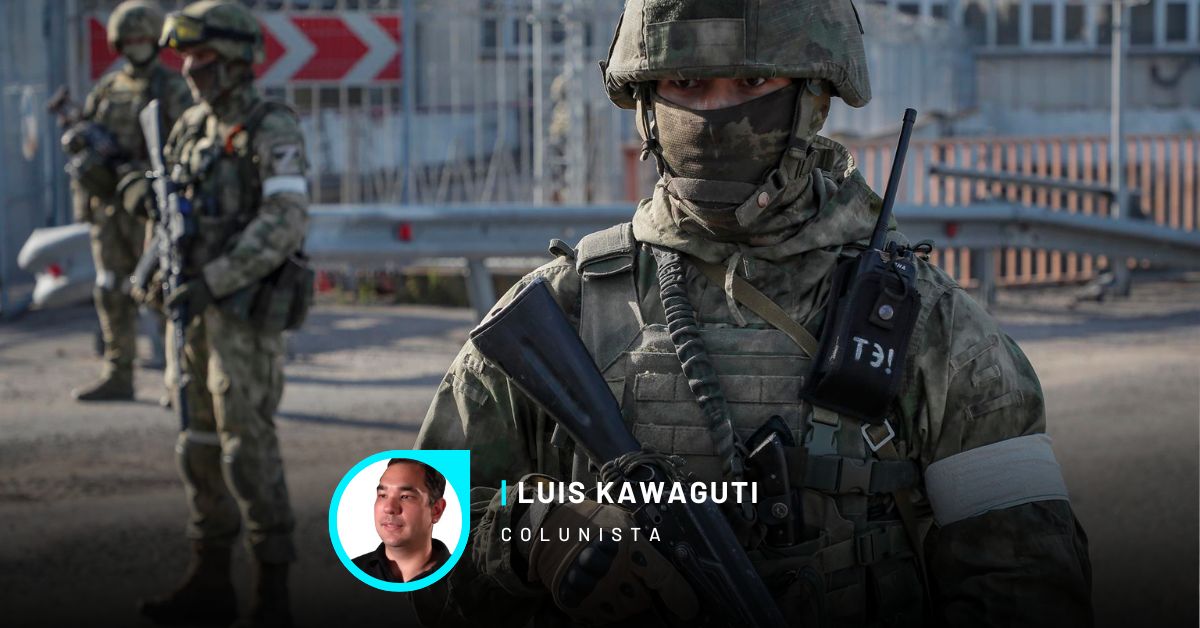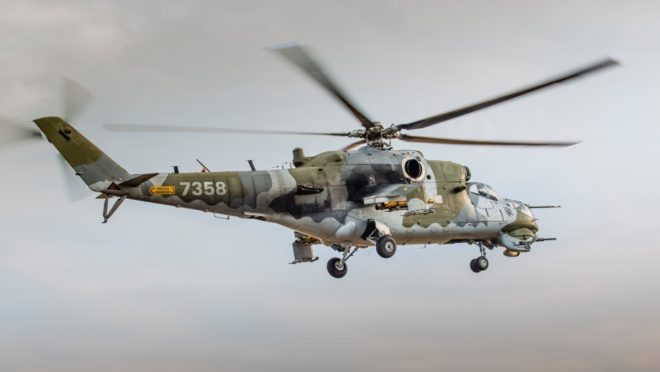Counter-offensive could decide Ukraine’s government’s fate

[ad_1]

The Ukrainian government is preparing a massive counter-offensive to try to free the southern city of Kherson. The result of this action has the potential to influence the political destiny of President Volodymyr Zelensky and the support of Western powers for Ukrainian troops.
Several Ukrainian military units, which were fighting in Donbas, in the east, were transferred about two weeks ago to the city of Mykolaiv – considered a bastion of defense in the south of the country. Troops stationed in the city prevented Russia from completing its conquest of the Ukrainian coastline early in the war. There, these soldiers traded their Soviet-era weapons for American equipment and prepared for what could be Ukraine’s biggest counteroffensive yet.
Rammstein, a sniper who asked to be identified only by his nickname, fought in Donbas using an AK-12 assault rifle (a modernized version of the classic Soviet AK-47), equipped with a makeshift telescopic sight. This weapon is suitable for regular soldiers, but is inaccurate for a sniper or sniper like him.
In Mykolaiv, Rammstein received an additional weapon: an American Barrett M82 anti-material rifle, .50 caliber, with a silencer. Designed to take down vehicles or aircraft, the Barrett can hit targets 1 mile away or take down enemies protected behind walls or in poorly fortified positions. That is, the state of the art for a shooter.
“We went through training here in Mykolaiv. But the area is very dangerous. The command said there are too many Russian spies. When we’re off duty, we can’t walk around in uniform, because they follow the military to find out where their bases are,” Rammstein said.
After receiving specific instructions on weaponry, Rammstein joined hundreds of colleagues, Ukrainians and foreigners, who began to advance towards Kherson.
The aim is to free the city before September 11, the traditional day of elections in the Russian Federation. US National Security Council spokesman John Kirby said on June 19 that the Kremlin is preparing to hold referendums in the occupied regions of Kherson, Zaporizhzhia, Donetsk and Luhansk on the same date.
The idea would be to use the same playbook that made the controversial annexation of Crimea possible in 2014: holding votes restricted to the locations in question, asking whether citizens want to be part of Ukraine or Russia. Ukrainian legislation even provides for this type of plebiscite, but the vote has to be national.
Furthermore, Western officials say there is a high likelihood that Russia will manipulate the results of the referendums in an attempt to legitimize formal annexations of territory.
Once Ukrainian territory is officially declared Russian soil, President Vladimir Putin can claim, directly or indirectly, that Russian military doctrine – which allows the use of nuclear weapons if Russian soil is invaded – can be extended to Ukraine’s annexed territories. . The analysis is from the American think tank Institute for the Study of War (ISW).
That is why the Ukrainians are in a hurry to attack and their Western allies are trying to speed up the delivery of weapons and ammunition. But in practice, Kherson is the only occupied area where Ukraine has a real chance of beating the Russians in the short term. Hardly the territories in Zaporizhzhia, Donetsk and Luhansk will be liberated before the annexation.
Kherson is the only occupied territory west of the Dnipro River, which cuts Ukraine practically in half. Between the 19th and 20th of July, the Ukrainians used American Himars precision rocket launchers to bomb the only two bridges over the Dnipro – which could be used by the Russians to bring reinforcements and weaponry to Kherson.
One of them was almost unusable. The second, mounted on a hydroelectric dam, continues to operate, according to recent information. According to Serhiy Khlan, Kherson’s administrative adviser, the bombing of bridges serves to prevent Russia from moving heavy equipment into the city without stopping food and supplies from entering.
At least ten targets were also said to have been hit, among Russian ammunition depots and logistics centers spread across the region. In parallel, Ukrainian troops took over several villages between the 15th and 22nd of July, in preparation for the invasion.
On the 24th, the Ukrainian president announced that the counteroffensive was underway. But it is still not possible to know its magnitude and whether there are enough weapons and fighters to carry out the mission.
According to another think tank, the International Institute for Strategic Studies (IISS), Ukraine started the war with approximately 125,000 fighters in the army and 100,000 members of the national guard and territorial defense forces.
Ukraine does not disclose its casualty figures. But, based on statements by the Ukrainian government that 100 soldiers are killed a day, international media outlets have estimated the number of fighters killed in action to be between 35,000 and 45,000 so far.
Defense Minister Oleksii Reznikov even said that the country would be able to gather 1 million fighters (700,000 army fighters and 300,000 paramilitaries). But evidence has yet to emerge that this is doable, nor whether the new recruits would have enough training to make a difference on the battlefield.
In addition, successful military action depends on many other factors, such as advanced weapons, logistics, and organization. It is not known exactly how many heavy weapons sent by the West are in Mykolaiv. But, in theory, Ukraine has an advantage in logistics due to the city’s geographical position.
Zelensky’s political future could be influenced by the outcome of this operation. If he succeeds in freeing Kherson, the president will send a message to the United States and its European allies that the transfers of weapons, training and intelligence provided are having an effect. He will also reinforce his image internally, showing that he is the right man to lead the nation in times of war.
In the best-case scenario for Ukraine, Russian troops will not be able to send enough reinforcements to Kherson because of the Dnipro River barrier and long-range fire from the Himars (which can hit targets up to 80 km away). In parallel, an uprising led by partisans (guerrillas) will destabilize the city’s defense and the Russians will have to flee abandoning weapons and heavy equipment as the main Ukrainian strike force approaches.
In turn, Moscow has been moving troops from the eastern front to the south of the country to support positions in Kherson. These troops will attempt to cross the Dnipro via the remaining bridge or using ferries and temporary bridges. Russian aviation can be used to bomb Ukrainian tanks and troops, while drones (which the Kremlin is trying to buy from Iran) will go hunting for Himars rocket launchers and other Western-supplied artillery.
Not to mention that the Kremlin still has a large stockpile of cruise missiles that can hit any part of Ukraine.
So, if the Ukrainian counteroffensive is unable to free Kherson, the leadership ability of Zelensky and his generals could be called into question. Russian Foreign Minister Sergey Lavrov said this month that one of Russia’s goals is to overthrow the Ukrainian president.
The Kremlin had been waging a war of attrition (with much violence and little progress) which, among other objectives, was aimed at lowering Ukrainian morale and discrediting Zelensky. A victory at Kherson could accelerate that process.
Russia appears to be betting on this battle in the same way as Ukraine. On the eastern front, troops took a rest break between 7 and 16 July. When the advance resumed, it proceeded more slowly, only in two directions: Bakhmut and Siviersky. This could indicate a reorganization of Russian troops.
As the two armies prepare to face off at Kherson, the city remains largely isolated. Before the Russian invasion, the estimated population was 290,000 people. In the last survey, carried out in May, 180,000 were still in the region. There is no access to medicines or essential goods.
The Ukrainian government has been issuing requests for the population to leave the city. But the internet network and media would have already been replaced by Russian networks.
People also do not have access to banks and ATMs to withdraw money. According to the pro-Ukraine Kyiv Independent newspaper, many are raising funds by selling their goods at flea markets. Russia has imposed use of the ruble, its national currency, but people would be refusing to use it.
The newspaper also said that Russian military police have been acting violently to try to identify members of the Ukrainian resistance. In turn, partisans have carried out assassination attempts against Russian authorities.
In summary, Ukraine has a good opportunity to achieve a localized military and media victory, due to factors such as Kherson’s geographical position, the concentration of troops in Mykolaiv and the Himars rocket launchers. But Russia continues to have superior weaponry and combatant superiority in the war as a whole. Therefore, Kherson will hardly be the last battle of this war.
[ad_2]



